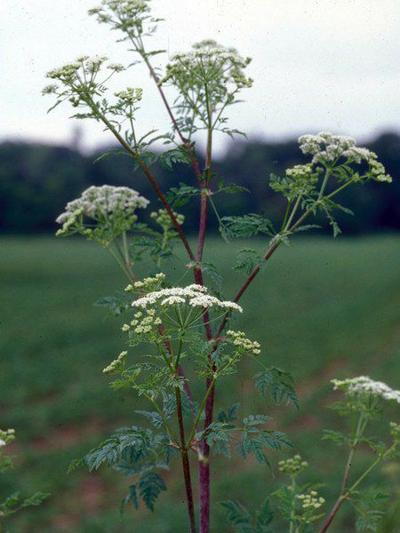
There have been some calls to the county extension offices lately asking “What is that pretty white flowered plant growing along so many of our county/state roadways?”
“It is likely Poison Hemlock, and it can be deadly to both animals and humans as the name implies,” said Scott County Extention Agent Tom Springstun. “Do not allow livestock, pets, &/or people to come into contact with it as it may be a fatal encounter. If handling for removal, always wear protective clothing, including gloves and eye protection, to prevent the plant from contacting skin.”
Poison hemlock is a member of the parsley family. It has a biennial growth pattern, being a low-lying rosette the first year and bolting to 3-10 feet the second year, Springstun said. The stems are stout, smooth, with distinctive purple spotting. Flowers are small, white and found in umbrella-shaped clusters in early summer (June/July). The fern-like leaves are pinnately compound and arranged alternately on the stem. The plant reproduces prolifically via seeds that are flattened and ribbed. Seeds mature in August/September and are easily spread via mowing/agriculture equipment.
It may be confused with wild carrot (Queen Anne’s lace) or wild cow parsnip, both of which have white umbrella-shape flower clusters. Wild carrot has a hairy stem, while cow parsnip has a ribbed stem. Neither have purple spotting.
To learn more about this invasive plant, see the FNR-437-W publication titled Poison Hemlock: https://www.extension.purdue.edu/extmedia/fnr/fnr-437-w.pdf